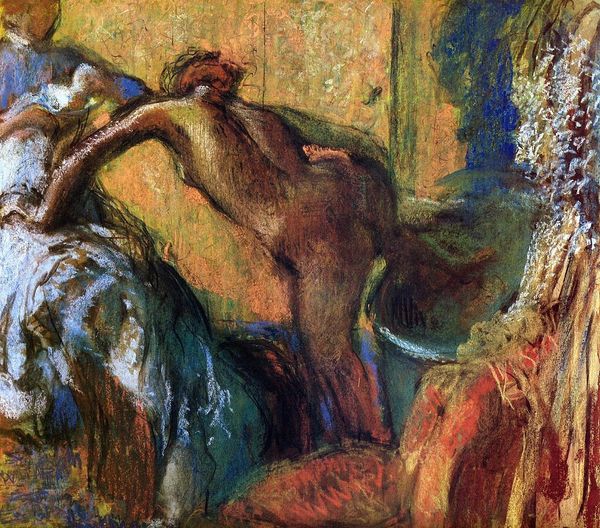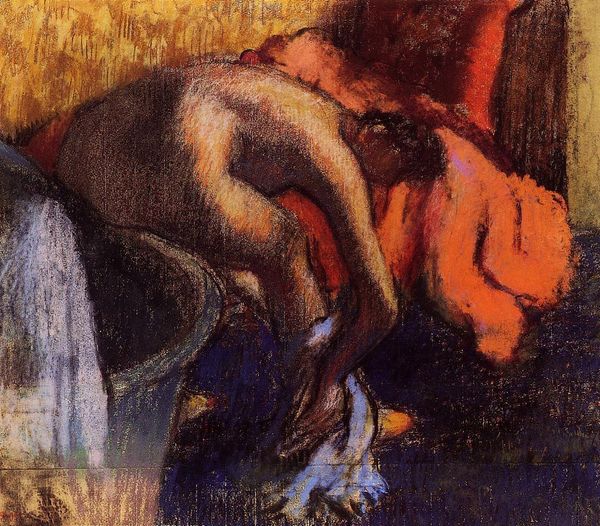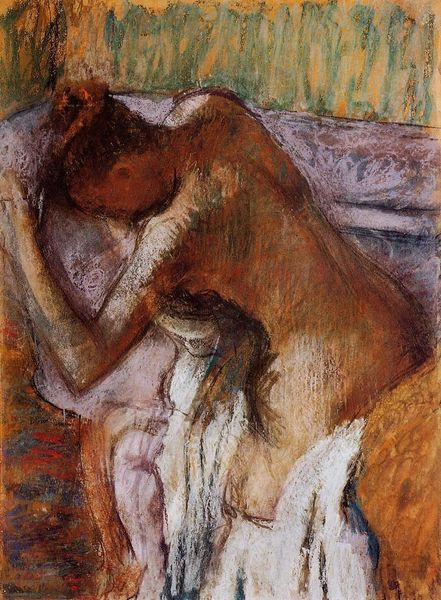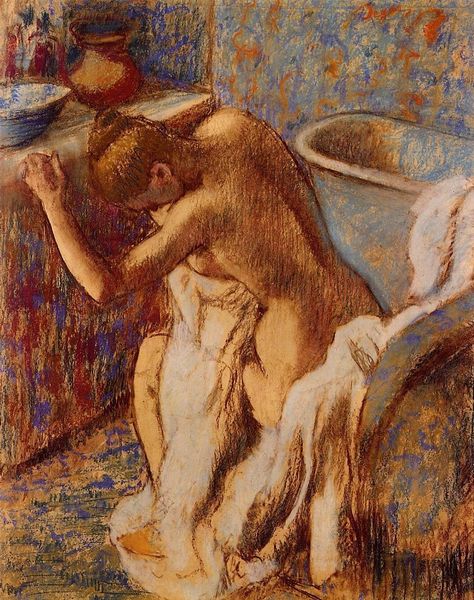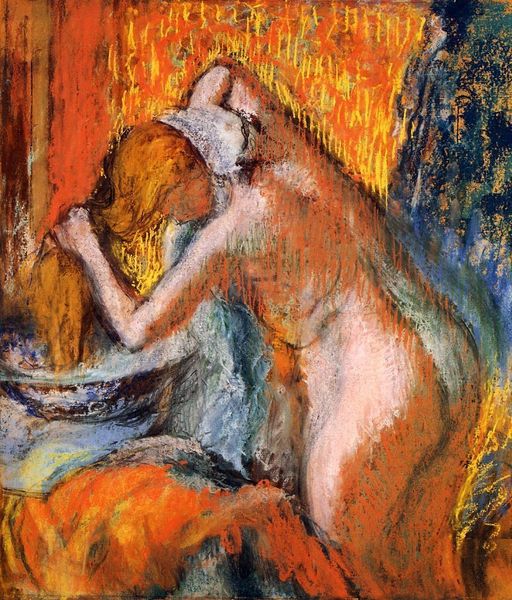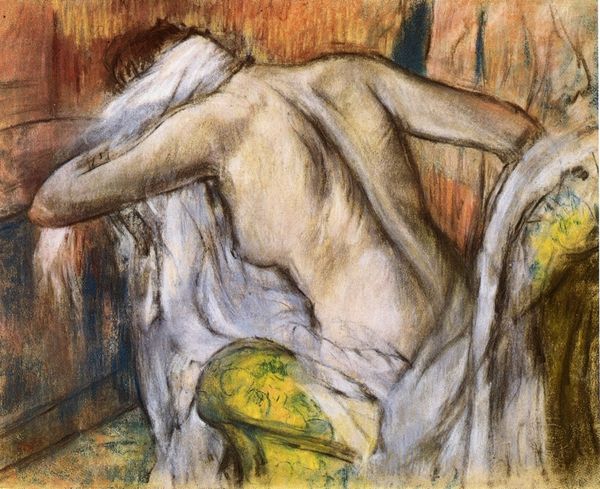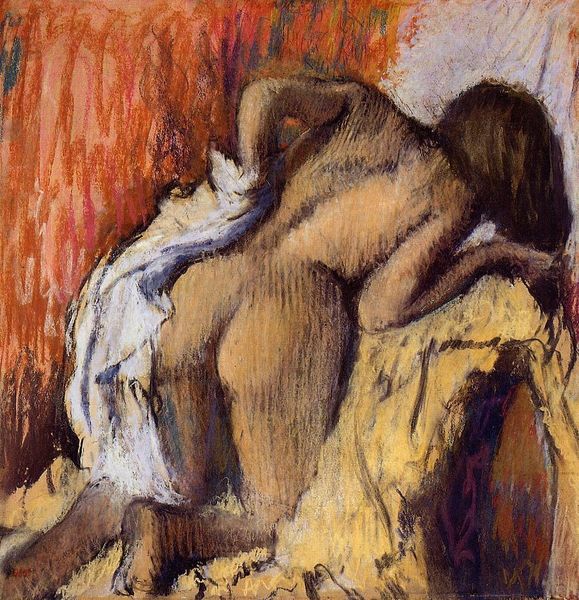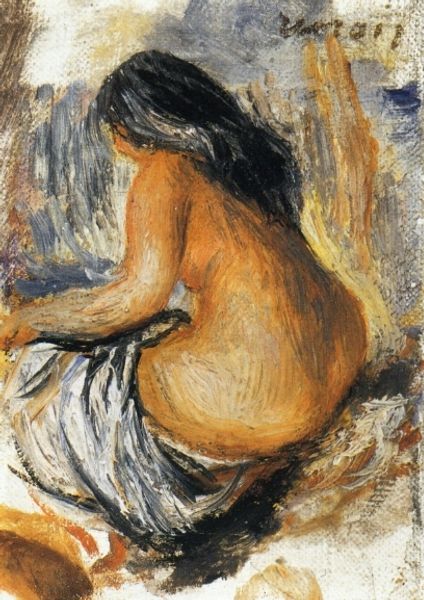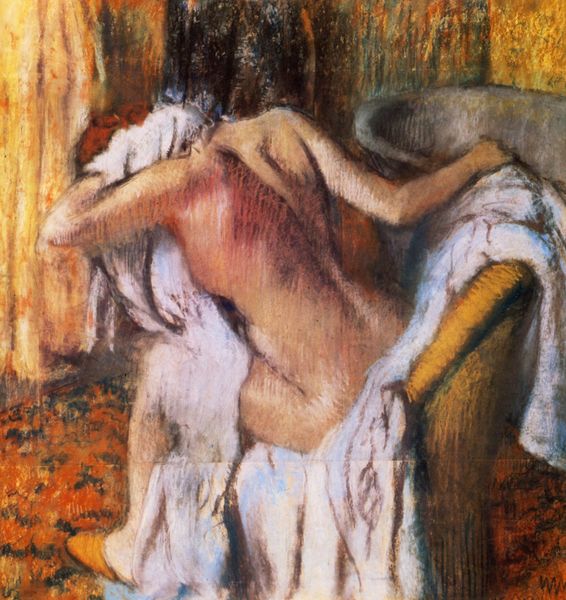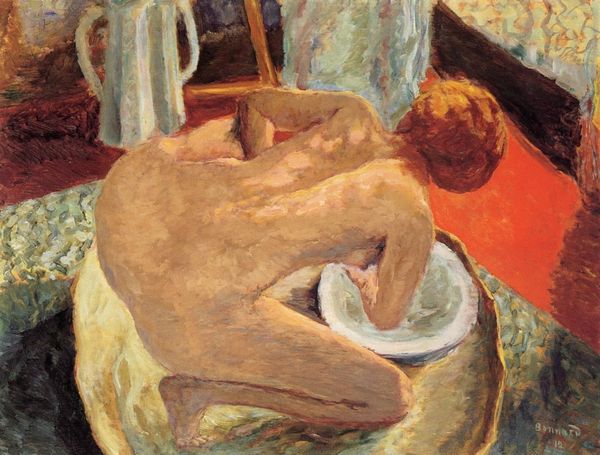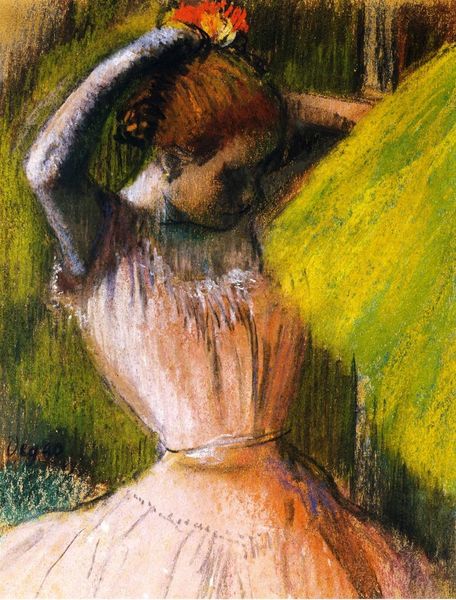
Copyright: Public domain
Editor: So, here we have Degas's "After the Bath (Woman Drying Herself)," created around 1900. The blend of pastels and maybe oil paint gives it such a tactile quality. What strikes me is the sense of immediacy, as if we're intruding on a private moment. What do you see in it? Curator: What stands out to me is Degas's clear attention to labor here. The image is not only an intimate look into a woman’s routine, but also into the physical demands that were part of even the most quotidian aspects of life at the turn of the century. Think of the work involved in heating water, maintaining hygiene without modern plumbing… It speaks volumes about the materiality of everyday existence for women of that time. What choices do you think Degas made in his artistic production to draw the viewer's eye towards the actions, and material struggles in this portrayal? Editor: Well, the contorted pose definitely draws attention to the physical effort, right? And the rough texture of the pastels almost makes you feel the coarse fabric of the towel. So it emphasizes labor both in its subject and in its… making. Curator: Precisely! And it’s a great departure from typical representations of women in art, more focused on idealized beauty. Instead, Degas depicts a kind of honest labor usually invisible to the art world. That brings into play other aspects that can involve social classes and conditions related to the worker’s status at the turn of the century. Degas seems to want the viewers to face an intimacy we were never meant to observe, which raises questions about consumerism. What does this say about looking and the art market then? Editor: Wow, I never thought about the consumerism aspect, but now I see that presenting such intimate daily labor as something to be observed and purchased definitely changes its meaning. Curator: Indeed, thinking about the socio-economic dimensions adds an incredible layer. Seeing "high art" grapple with subjects previously confined to domestic spaces opens avenues to understand how artistic expression and the materiality of life are intertwined. Editor: This has been such an insightful exploration; looking at it from a materialist point of view brings new dimensions. It's so much more than just a pretty picture! Curator: Agreed! Analyzing the means of production and social context reshapes our understanding of even familiar artworks.
Comments
No comments
Be the first to comment and join the conversation on the ultimate creative platform.

